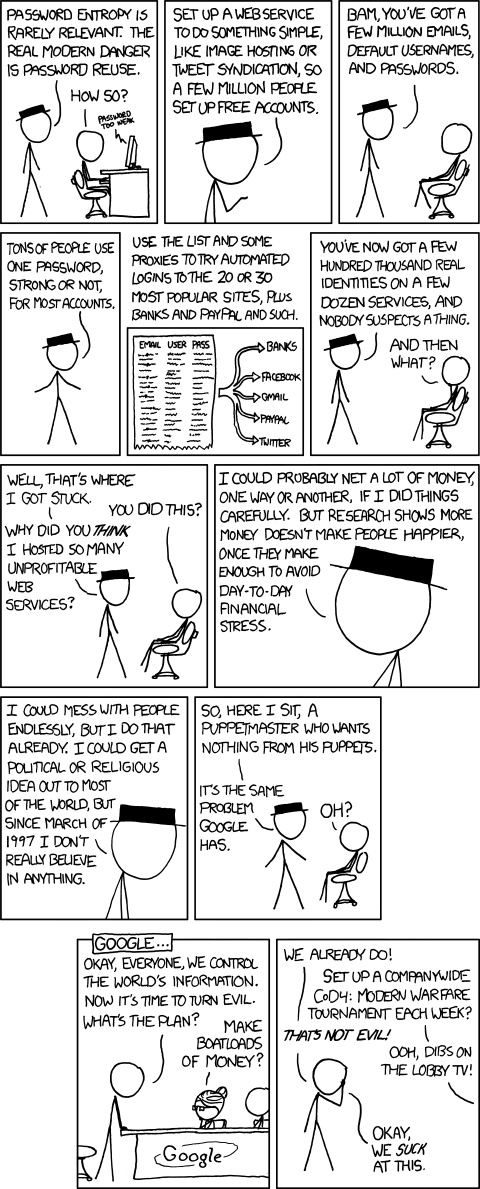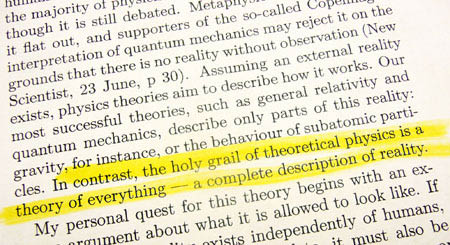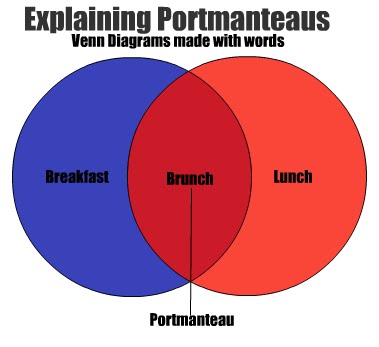So apparently Wally Wood was a comic book illustrator. He coined 22 frames that will always work in comic drawing that are equally applicable for photography or shooting some form of video. And I like them. So here they are. Click the picture to make it bigger, and go here for some explanation.

Category: Communication
22 shots that will always work
Design by committee
Nobody likes design by committee. Except those for whom it is an opportunity to contribute above their payscale.
This article from Smashing Magazine about why design by committee should die contains a couple of terrific pieces of advice, including the practice of leaving a glaring error in your “final” design so that the approver feels like they can contribute something to the process:
“A photographer I know once said, “I’ll give the model a big mole on her face, and the committee focuses on that and are usually satisfied with the momentous change of removing it and leave everything else as is.””
…and this new buzzword that everybody should learn.
“Commidiot,” which is a committee member who has no idea what is going on in front of them but feels they have to say something of importance to justify their presence in the room.”
Why you shouldn’t use the same password on every site
Every time I use the same password on an internet start up I wonder if this will be the time that this XKCD prophecy is fulfilled.

Facebook Demo-info-graphic
Is your mother on Facebook? Old people are signing up like never before…

How to stop speeding
This is a cool ad campaign with one of those clever stretchy sticker things that looks like it’s in 3D from different angles. The type you see on sports fields in TV broadcasts.

An infographic explaining infographics
I post lots of infographics. I like them. They are simplicity personified (though not as simple as a good Venn Diagram). But infographics are part of the search engine optimisation strategies of some of the web’s nefarious spammers.
So here’s an explanation.

Via Urlesque.
Privacy infographic
I’m not paranoid about the data Facebook, Google and Apple are gathering about me. Because I put too much stuff out there voluntarily for that to be overly concerning, and I don’t do anything I wouldn’t want the world seeing anyway. But some people find this sort of thing scary.

From here.
Church Marketing on the Gruen Transfer
The Gruen Transfer last night (or tonight if you caught it on ABC 2) had a segment on how religion uses advertising.
They looked at the Jesus: All About Life TV ad from last year.
Todd Samson reckons the Jesus is cool, the church is bad thing was based on sound research – but that the church is let down by the “retail experience” which is church. He reckons Hillsong has done this well.
Russel Howcroft said the ads worked, and numbers increased.
One of the other panelists made a point that preaching to the converted is a valid and necessary function of advertising.
The next ad was a Scientology spot. “Know yourself, know life” – it was, in the words of one of the panelists “pure motivational speech,” and it didn’t feature any ugly people.
Todd says religions have traditionally been about community. And the scientology ad tries to capture that.
The next spot was a Scientology ad featuring Tom Cruise – for people within the cult. Russel calls Tom Cruise a total “brain smashing” advantage for the converted Scientology people. He says “aspiration is so important in branding” and celebrity endorsements are a key part of that. Todd says it’s “influencing the influencers.”
The Mormons had a really weird ad that tapped into familial guilt. A little girl asks her mum to go rollerskating with her, she says no, the precocious kid reminds her that she’ll grow up to be a disconnected teenager. One of the Gruen panellists said the whole thing looked plastic, was horribly out of touch, and that it was pretty awful.
Then my favourite. Answers in Genesis. With the kid in a singlet with a pistol. Wil Anderson quips “Are you feeling Godly Punk?” – “will scaring people into religion help?” Todd quips “I thought that’s what Hell was for.”
Todd says religious advertising is run most often in tough times. Todd has an impressive grasp of the argument Answers in Genesis is making about evolution and morality. He calls it an awful piece of communication. They are preaching to the converted. Fear is good at keeping people in, but not attracting people in.
If you missed the episode check out this advert for Australian Christian television:
Ending the quest for the Holy Grail
Most guides to better writing include, somewhere in the top ten tips, something about avoiding hackneyed cliches. Hackneyed cliches like describing the search for something special as a “quest for the Holy Grail.”
Here’s how bad it is.
“In 2008, Guardian columnist Tim Radford wrote: “British journalists have invoked the holy grail more than 1,000 times in the last 12 months. I have, almost certainly, evoked the same divinely-touched chalice, rightly celebrated in Arthurian legend, in some inappropriate context. We are all guilty… Grail imagery occurs with astonishing frequency in the scholarly press. Somewhere in the medical literature, I suspect, lurks a paper about the holy grail of hip replacement.”

This is a good story on the Holy Grail pandemic. Unless you’re actually searching for the cup Jesus allegedly drank out of on the cross, King Arthur style, then you should find a better phrase.
“Ten years later [in 1978], Stephen J. Lippard, then at Columbia University but currently at the Massachusetts Institute of Technology, put the first holy grail into a research article in an ACS journal when he wrote a paper on how platinum antitumor complexes interact with polynucleotides and kill cancer cells. “As with the Holy Grail of medieval legend, the joy thus far has been in the searching,” Lippard wrote.
Since then, holy grails in chemical research have been steadily on the rise. Including Lippard’s, three holy grails appeared in ACS journals in the 1970s, and five could be found in the 1980s. During the 1990s, 39 research articles in ACS journals made mention of a holy grail, and since 2000, 169 research articles invoked the sacred goblet. A SciFinder search shows this trend of chemists gravitating toward grails holds true for non-ACS journals as well.”
Kanye: The Saviour of Twitter
I confess, yesterday, while sitting in Greek and waiting to hear which way the independents would swing (in favour of democracy or broadband flavoured pork) I was relying on Twitter. Mainstream media is great for fact checking and objectivity – Twitter carries the can for immediacy (you don’t have to have your stuff approved by an editor). Because most of Australia was glued to live coverage anyway the pressure for news sites to post the info first was pretty low. So 1 point for Twitter.
By my count twitter is up 2 points currently – because they boast another scoop on mainstream media – the stream of consciousness rants and thoughts of one K-West. They’re needlessly and pointlessly interesting. In the last couple of days he posted a stream of stream of consciousness (a river of consciousness perhaps) thoughts that cobbled together (let Gizmodo do it for you) amount to a lengthy apology to Taylor Swift for last year’s Grammy interruption, and an apology to his fans who had to leap to his defence as a result.
An excerpt:
“The media has successfully diminished the “receptive” audience of KANYE WEST. Taking a 15 second blip, the media have successfully painted the image of the ANGRY BLACK MAN, The King Kong theory. I’m the guy who at one point could perform the Justin Timberlake on stage and everyone would be sooo happy that I was there.
People tweeted that they wish I was dead… No listen. They wanted me to die, people. I carry that. I smile and take pictures through that. I wear my scars. It’s almost like I have to where a suit to juxtapose my image and I won’t lie: IT WORKS!
I wrote a song for Taylor Swift that’s so beautiful, and I want her to have it. If she won’t take it then I’ll perform it for her. She had nothing to do with my issues with award shows. She had no idea what hit her. She’s just a li’l girl with dreams like the rest of us. She deserves the apology more than anyone.”
Aww. Shucks.
You might remember Tea Party Jesus, words from members of the new “conservative force” in American politics in speech bubbles on pictures of Jesus. Well, Jesus Needs New PR has gone one better. Kanye West Jesus.




Further proof, if required, that Kanye is not the messiah, just a very naughty boy with a palpable messianic complex.
History in Facebook Updates
What would events in world history look like in Facebook updates? Sadly these are just one block image and not separate ones. But they’re very funny. From Cool Material.

Facebook for ministry…
Tim Challies has this wise advice on how to take a balanced approach to using social media to enhance, rather than replace, your church community.
“So as you use Facebook, be careful to use it in a supplementary way, a way that supplements your real flesh and blood contact with the people you are seeking to serve. Use it to share event information, to get people remembering last week’s sermons and thinking toward next week’s, to get people singing the songs you sing and praying for what needs to be prayed for. Use it to share photographs of great events and to encourage people to make contact with one another. The ways it can supplement ministry are nearly endless. But all the while use it to push yourself toward, not away from, face to face contact.”
Mikey has some practical tips for building a custom landing page for your Facebook presence.
This site, mediaforministry.org, has some good tips for using Facebook, and WordPress. And you should, of course, all be reading Communicate Jesus already if this kind of post excites you.
Underscores for emphasis?
Have I missed a memo?
When did underscores before and after _emphasised words_ become something that was acceptable?
It’s dumb. It’s like underlining but, if possible, less visually appealing and more likely to make me write you off as a writer.
What happened to using vocabulary to express emphasis. Some people are so stupid.
Here’s my order of what’s acceptable when you’re trying to emphasise stuff:
1. An emphatic word.
2. An adverb or adjective.
3. Bolding.
4. All caps.
5. An exclamation mark (just because I hate them).
6. Underlining.
7. Underlining and bolding.
8. Underscores.
Anything after 3 is pushing the envelope.
More on the place of “gimmicks” in ministry
Some have suggested that “positive interactions” is a better way to frame this than “gimmicks” (which I used previously) but thinking in a PR/branding framework is a blessing, and a curse, that I am unfortunate enough to carry.
Mikey has posted a great post pondering about how such gimmicks, or “goodwill exercises” can be used on campus to promote his AFES group at a university market day (when everybody is giving out stuff).
He shared in the comments that he’s started reading blogs about how to stand out at trade-shows to think through the issue. Here are a couple of the tips he picked up.
“1. “Market outside of what you paid for: A big mistake that many exhibitors make at tradeshows is sticking to what they believe they have paid for. This means only marketing from a booth, following all the rules of the event and not venturing out. This is the easy path, and one that is often taken because the staff at a booth is not incentivized to do more. If you think about the tradeshows that you have been to, the brands that stand out most are the ones that are wandering the halls, attending and asking questions at sessions, and generally taking a more proactive and guerilla approach to marketing.”
2 “Spend on the giveaways, not the booth. Everyone knows that nothing spreads faster at the tradeshow than a brand with a really big or valuable giveaway. ”
Both are good advice in my experience helping brainstorm trade show presence (and presents). But it’s not just about picking a big or valuable giveaway – the big or valuable giveaway needs to tie in to your key message, or your brand, in some way. The tradeshow idea is brilliant. We used to try to come up with really memorable tradeshow gifts that tied into our messages – you don’t just want it to be good. You want it to be good and relevant.
A few years ago, when we were marketing North Queensland in Brisbane I wanted to give people compasses and tell them to follow their way to paradise (but getting them to stop in Townsville would have involved purchasing a massive magnet (which, incidentally, is how Magnetic Island got its name)). Then, when water restrictions were biting I wanted to give people empty shower egg timers and water pistols (which would have been fun at trade shows). We ended up going with water bottles with North Queensland’s average annual rainfall printed on the label.
I think there’s something to thinking about how we can use a good gimmick as a hook for our message, not just in the university context but in the work of promoting our churches.
Portmanteaus: Linguistic Venn Diagrams
Gary mentioned portmanteaus today. It got me thinking about why I love a good portmanteau.
